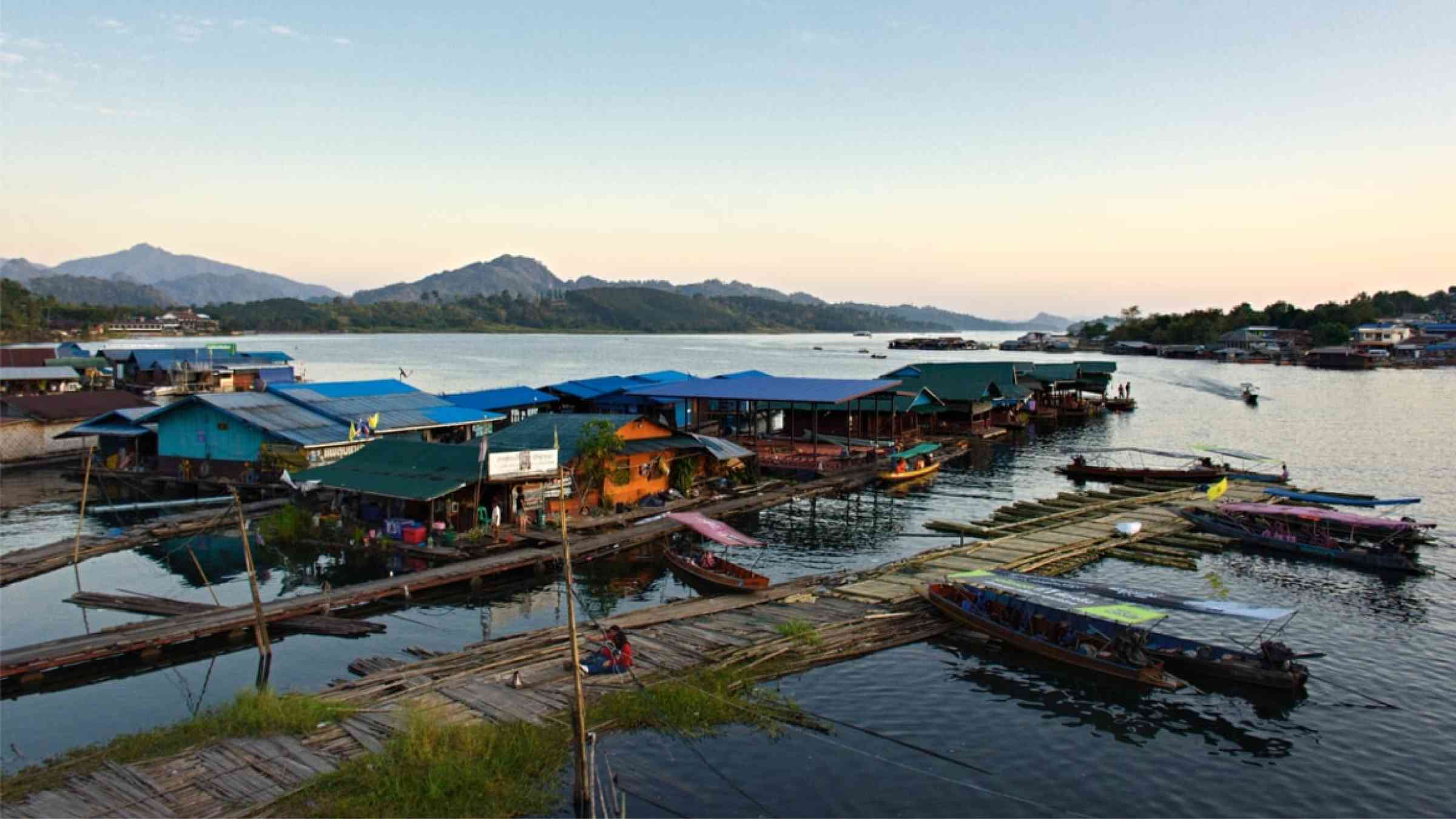Floating resilience: how Thailand’s floating villages stay in place and adapt

The story of Baan Koh Chai
About 80 years ago, rice farmers and foresters first established temporary housing in Baan Koh Chai, southern Thailand, for seasonal fishing. Upstream rice farmers would spend part of the year fishing between rice harvests and found it more convenient to stay close to the mouth of the Pak Phanang River rather than commuting back and forth each day. Eventually, families began to settle permanently in the area, building stilted houses among nipa palms and mangroves, with fishing being the primary source of livelihood.
In 1962, Baan Koh Chai experienced its first disaster when Tropical Storm Harriet destroyed all the homes in the village. The families worked together to rebuild, living on their fishing boats and building one home at a time. In response to the widespread damage throughout Pak Phanang District, the Royal Forest Department designated Baan Koh Chai and the surrounding area as an environmental preserve and planted mangroves as a risk mitigation measure. This in turn modified the river and wetland ecosystem while limiting community opportunities to access resources or formal land rights.
In the decades since the storm, the community has faced more changes, both negative and beneficial. Factories along the river have created new sources of pollution, while the construction of an upstream watergate led to significant changes in water flow, affected local fishing populations and fish raising opportunities and increased seasonal flooding. At the same time, the village was connected to the electricity grid and running water, while the building of walkways helped connect homes in the floating village.
Baan Koh Chai residents recognize the challenges coming their way
With the adverse effects of climate change – more intense storms and higher waves combined with livelihood challenges – many in the community wonder how long they have until they have to move somewhere else. However, Baan Koh Chai residents are adamant that not only do they intend to stay in their village, they are actively working to adapt and enhance community life and resilience.

The community has faced more changes, both negative and beneficial. Photo: Nicole Anschell / SEI.

Residents say they intend to stay in their village and are actively working to adapt and enhance their resilience. Photo: Nicole Anschell / SEI.
Many generations, many acts of resilience
Many in Baan Koh Chai have several generations of stories to tell, starting from around when the village was first established. Several residents mentioned this familial history alongside the rich environment, livelihood opportunities, self-sufficiency and a sense of community as reasons contributing to why they could not imagine living anywhere else. However, given the increasing risks, simply staying in place is no longer as easy as it used to be.

The community built stilted houses among nipa palms and mangroves, with fishing being the primary source of livelihood. Photo: Nicole Anschell / SEI.
In 2019, the community was again impacted by a tropical storm, but this time, the government had an established evacuation plan. Tropical Storm Pabuk, alongside the storm warnings they have had since, reminded the community of its exposure to the elements and caused considerable destruction.
Disaster response and other adaptation measures have continued in the village. In cases where homes were destroyed, they were rebuilt with stronger materials and further from the river’s edge. Mangrove conservation continues and villagers diligently comply with restoration efforts led by the Royal Forest Department.

As fishing becomes a less lucrative occupation, villagers are also considering how to make tourism in the village more sustainable. Photo: Nicole Anschell / SEI.
Recently, the government gave the community permission to use the mangrove area, enhancing their security while also creating clear conservation expectations. As fishing becomes a less lucrative occupation, villagers are also considering how to make tourism in the village more sustainable.
When discussing the adverse impacts of climate change, the increasing intensity and frequency of hazards and certain slow-onset changes that can make places uninhabitable comes to mind. From the outside, some of these risks may seem unimaginable, but these assumptions often come about without a full understanding of what life is like and what people may give up in moving elsewhere. In Baan Koh Chai, there are many challenges associated with local development and environmental change, but there is also a strong connection to the community and a determination to stay.

There are many challenges associated with local development and environmental change, but there is also a strong connection to the community and a determination to stay. Photo: Nicole Anschell / SEI.
The experiences of villagers in Baan Koh Chai think about climate-related migration a bit differently. While there will likely be certain places where people are no longer able to live, for others, the decision may not be so simple. Despite the risks and challenges, living somewhere is not just about location and comfort, but also relates to independence, culture and heritage. Ultimately, these stories and experiences dig into the complexity of climate impacts and call for better understanding community dynamics while working towards more sustainable adaptation.